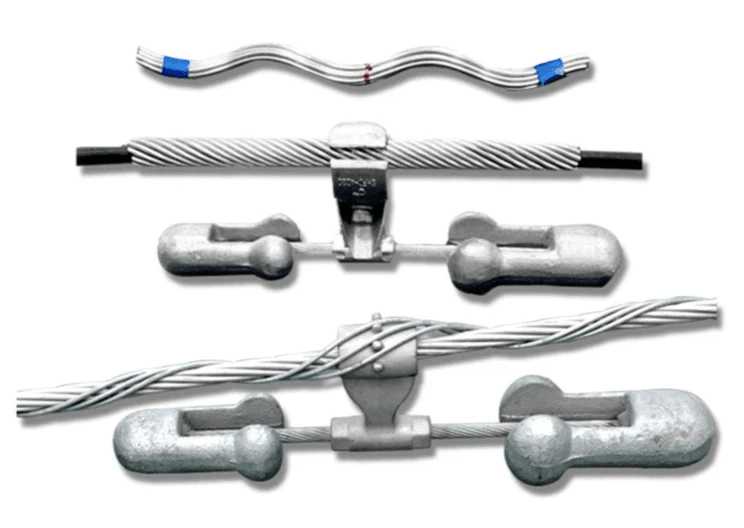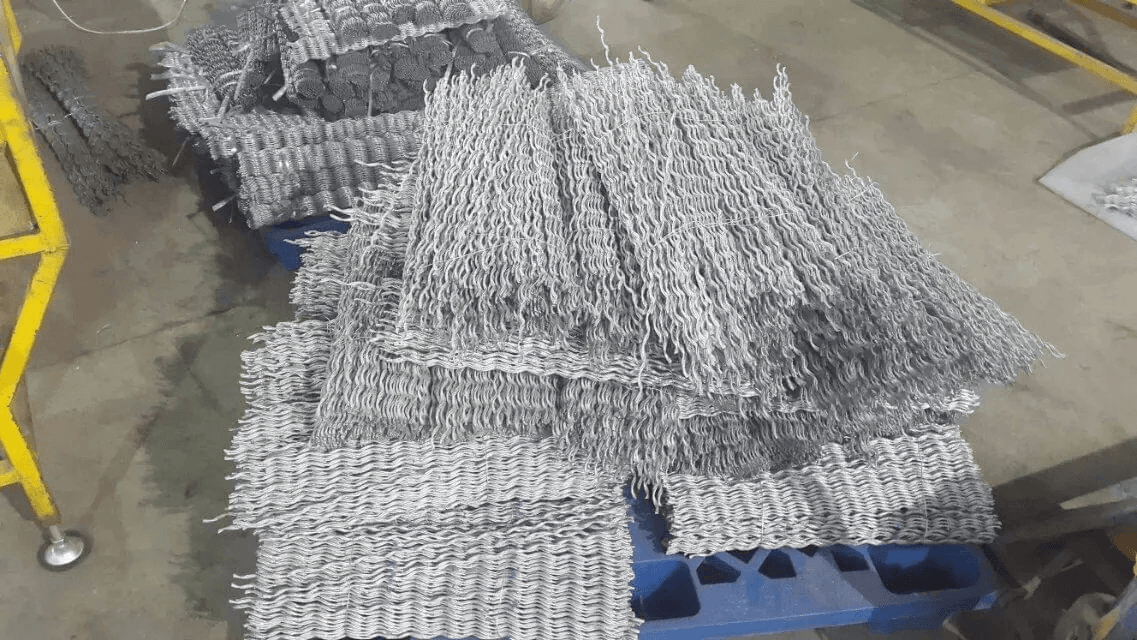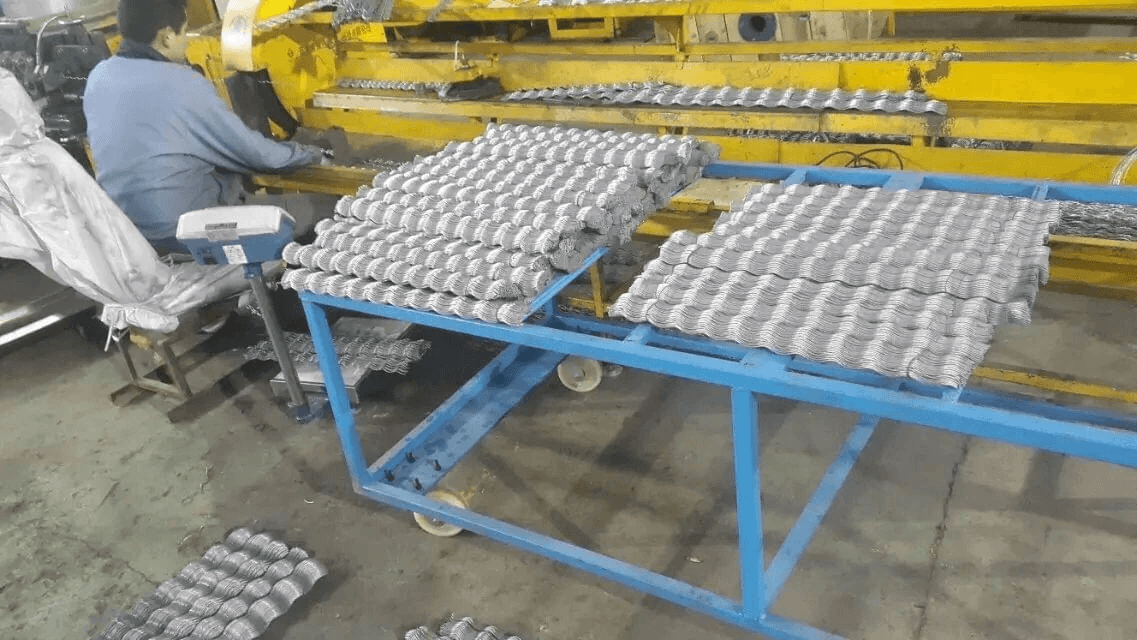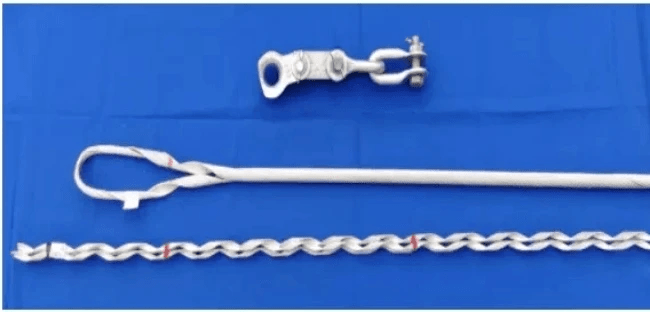Introduction

In the world of electrical infrastructure, helical fittings play a crucial role in ensuring reliability and efficiency. These innovative components are not just ordinary hardware; they are essential for maintaining the integrity of power lines and other critical systems. As we dive into this topic, we will explore the significance of helical line products, their various applications, and the leading players in this specialized market.
Importance of Helical Fittings
Helical fittings are pivotal in providing secure connections that withstand environmental stresses and mechanical loads. Their unique design allows for better load distribution, reducing the risk of failure in overhead power lines. Without these cleverly engineered components, our electrical grids would be far less reliable, leading to potential outages and safety hazards.
Overview of Helical Line Products
Helical line products encompass a range of fittings designed specifically for use in electrical installations, including suspension fittings and helical dead ends. These products are engineered to offer superior performance under challenging conditions while enhancing overall system durability. From residential setups to large-scale utility projects, these components ensure that power is delivered safely and efficiently.
Key Players in the Market
The market for helical line products is competitive and features several key players who have established themselves as leaders through innovation and quality manufacturing practices. Companies like Spark Fittings have set high standards with their advanced designs and commitment to safety. By examining these industry competitors, we can gain insight into current trends and future developments within the realm of helical fittings.
What Are Helical Fittings?

Helical fittings are essential components in the realm of electrical infrastructure, designed to enhance the stability and efficiency of power systems. These fittings, often referred to as helical line products, utilize a unique spiral design that allows for superior load distribution and stress management. Their functionality revolves around securing cables and wires in various applications, ensuring that they remain intact and operational under challenging conditions.
Definition and Functionality
At their core, helical fittings are specialized hardware used to anchor or support electrical conductors in overhead power lines. They work by gripping the conductor tightly while distributing loads evenly across their surface area, which minimizes wear and tear over time. This innovative design not only improves the longevity of electrical systems but also reduces maintenance costs associated with traditional fittings.
Types of Helical Products
The world of helical line products is diverse, featuring several types tailored for specific applications. Among these are suspension fittings, which are crucial for holding conductors in place without transmitting excessive stress to the poles or towers. Additionally, there are helical dead ends designed to terminate conductors securely at the end of spans, along with specialized options like the Guy Grip Dead End for Stay Wire that provides enhanced grip and stability.
Applications in Electrical Infrastructure
Helical fittings play a pivotal role in various applications within electrical infrastructure, particularly in overhead power transmission lines. They ensure that conductors remain suspended properly while allowing for some movement during wind or thermal expansion without compromising safety or performance. Furthermore, these products enhance system reliability through their robust designs, making them indispensable in modern utility networks where efficiency is paramount.
Leading Manufacturers in the Industry

Spotlight on Spark Fittings
Spark Fittings has carved out a niche in the realm of helical line products with its commitment to quality and innovation. Known for their exceptional range of helical fittings, including suspension fittings and helical dead ends, they have become a trusted name among utility companies and contractors alike. Their focus on customer satisfaction ensures that every product is rigorously tested for reliability and performance in demanding environments.
One of Spark's significant contributions is their patented Guy Grip Dead End for Stay Wire technology, which enhances stability while reducing installation time. This unique approach not only simplifies installation but also improves overall system reliability—a win-win for anyone working with power lines. With a dedication to sustainability, Spark Fittings also emphasizes environmentally friendly manufacturing practices without compromising on product quality.
Comparison of Industry Competitors
While Spark Fittings leads in many areas, it’s essential to consider other industry competitors who also offer high-quality helical line products. Companies like ABC Helical Solutions and XYZ Power Components provide robust alternatives in suspension fittings and helical dead ends that cater to various market needs. Each competitor brings something unique to the table; some may focus more on cost-effectiveness while others prioritize advanced engineering techniques.
In comparing these manufacturers, one must evaluate factors such as product range, pricing strategies, customer service reputation, and technological advancements. For instance, ABC Helical Solutions might excel in producing affordable options but may lack some innovative features found in Spark's offerings. On the other hand, XYZ Power Components could be known for premium quality but at a higher price point—making it crucial for buyers to assess what aligns best with their project requirements.
Innovations in Manufacturing
Innovation is at the heart of progress within the realm of helical line products; manufacturers are constantly seeking ways to improve efficiency and effectiveness through advanced technologies. The introduction of automated production lines has significantly reduced manufacturing times while enhancing precision across all types of helix-based fittings—including suspension fittings and helix dead ends—resulting in better overall performance metrics.
Additionally, many leading manufacturers are investing heavily in research & development (R&D) initiatives aimed at creating more durable materials that withstand extreme weather conditions or heavy loads associated with electrical infrastructure projects. These innovations not only bolster system reliability but also extend product lifespans—a crucial factor when considering long-term operational costs.
Finally, collaborations between manufacturers and tech firms have led to smart solutions integrated into traditional designs; imagine sensors embedded within a Guy Grip Dead End for Stay Wire that monitor tension levels! Such advancements represent an exciting frontier where technology meets traditional engineering practices—a trend likely to shape the future landscape of helical line products significantly.
The Role of Suspension Fittings

Suspension fittings are crucial components in the realm of helical line products, acting as the unsung heroes that keep power lines stable and securely suspended. Their primary role is to support conductors and ensure they remain in place, even under substantial tension and environmental stress. Without these fittings, the integrity of electrical infrastructure could be compromised, leading to potential outages or hazards.
Understanding Their Importance
The importance of suspension fittings cannot be overstated; they are essential for maintaining the stability and safety of power lines. These helical fittings allow for a flexible connection that can accommodate movement caused by wind or temperature fluctuations, which is vital for long-term performance. By providing this flexibility, suspension fittings help mitigate stress on other components like Helical Dead Ends and Guy Grip Dead Ends for Stay Wire, ensuring a cohesive system.
Use Cases in Power Lines
In the world of power lines, suspension fittings serve multiple vital functions that enhance operational efficiency. They are commonly used to suspend conductors from poles or towers while allowing enough slack to accommodate thermal expansion or contraction. This versatility makes them indispensable in various configurations—from urban settings with dense infrastructure to rural areas with expansive spans between poles.
Benefits of Quality Suspension Fittings
Investing in quality suspension fittings yields numerous benefits that extend beyond just functionality; it enhances safety and reliability as well. High-quality helical line products are designed to withstand harsh weather conditions and resist wear over time, reducing maintenance needs significantly. Moreover, using superior materials means fewer failures down the line—ensuring that your Helical Fittings perform optimally while contributing to a more resilient electrical infrastructure.
Helical Dead Ends and Their Advantages

When it comes to helical line products, helical dead ends play a crucial role in ensuring the stability and reliability of power systems. These fittings are designed to anchor conductors securely, preventing them from slipping or experiencing undue stress. By effectively distributing loads, they enhance the overall performance of electrical infrastructure.
What Are Helical Dead Ends?
Helical dead ends are specialized fittings used in electrical applications to terminate conductors at various points along transmission lines. Designed with a unique helical shape, these fittings grip the conductor tightly while allowing for some flexibility during installation and operation. This combination of strength and adaptability makes them an essential component in modern electrical systems.
Installation Benefits and Considerations
One of the standout advantages of using helical dead ends is their ease of installation compared to traditional suspension fittings or other anchoring methods. The design allows for quicker setup times while minimizing labor costs, making them a favorite among contractors and utility companies alike. Additionally, careful consideration must be given to the specific application—ensuring that the correct size and type are chosen can significantly affect performance.
Enhancing System Reliability
The reliability of power systems hinges on effective components like helical dead ends that can withstand environmental stresses such as wind, ice, and thermal expansion. By providing secure anchorage for conductors, they reduce the risk of failures that could lead to outages or safety hazards. Ultimately, investing in high-quality helical line products enhances system integrity and promotes long-term operational success.
The Guy Grip Dead End for Stay Wire

When it comes to supporting power systems, the Guy Grip Dead End for Stay Wire is a game-changer. This innovative fitting provides a secure anchoring point for stay wires, ensuring stability and reliability in electrical infrastructure. By utilizing helical line products like the Guy Grip Dead End, utilities can enhance their network's overall performance.
How It Works in Power Systems
The Guy Grip Dead End functions by creating a strong grip on stay wires, distributing the load evenly across its surface. This unique design prevents slippage and allows for efficient tension management in power lines, which is crucial during adverse weather conditions. By integrating this helical fitting into their systems, operators can maintain optimal performance while minimizing maintenance needs.
Advantages Over Traditional Alternatives
One of the most significant advantages of the Guy Grip Dead End over traditional alternatives is its ease of installation. Unlike conventional fittings that may require extensive hardware or tools, this helical dead end can be quickly applied without compromising safety or integrity. Additionally, it offers superior durability and resistance to environmental factors, making it a preferred choice among professionals in the field.
Real-World Applications
In real-world scenarios, the Guy Grip Dead End has proven invaluable in various applications within electrical infrastructure. For instance, it's commonly used in urban settings where space constraints make traditional fittings impractical. Moreover, utility companies have reported increased efficiency and reduced downtime when employing these helical line products in their operations.
Conclusion

In wrapping up our exploration of helical line products, it’s clear that selecting the right helical fittings is crucial for ensuring the efficiency and reliability of electrical infrastructure. With various options available, including suspension fittings and helical dead ends, understanding their unique characteristics will empower engineers and contractors to make informed decisions. Choosing the right components not only enhances performance but also promotes safety in power systems.
Selecting the Right Helical Fittings
When it comes to selecting helical fittings, one must consider several factors such as load requirements, environmental conditions, and compatibility with existing systems. Suspension fittings play a vital role in supporting conductors while maintaining tension and stability under various weather conditions. Additionally, opting for high-quality helical dead ends or guy grip dead ends for stay wire ensures that your installation can withstand the test of time without compromising safety or functionality.
The Future of Helical Line Products
The future of helical line products looks promising as advancements in materials science and manufacturing processes continue to evolve. Innovations are paving the way for even more efficient designs that promise enhanced durability and reduced maintenance costs. As renewable energy sources gain traction, demand for robust solutions like suspension fittings and helix-based components will likely surge, shaping a new era in electrical infrastructure.
Ensuring Quality and Safety in Production
Ensuring quality and safety in production is paramount when dealing with critical components like helical fittings. Manufacturers must adhere to strict industry standards while employing rigorous testing protocols to guarantee product integrity. By prioritizing quality control measures throughout the production process, companies can ensure that their helical line products meet or exceed expectations—ultimately leading to safer installations across power networks.

